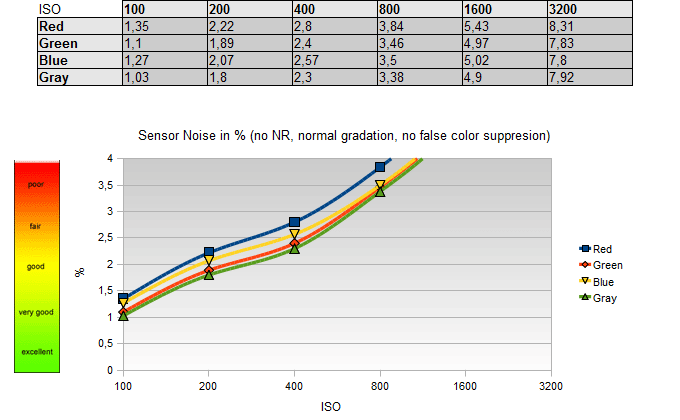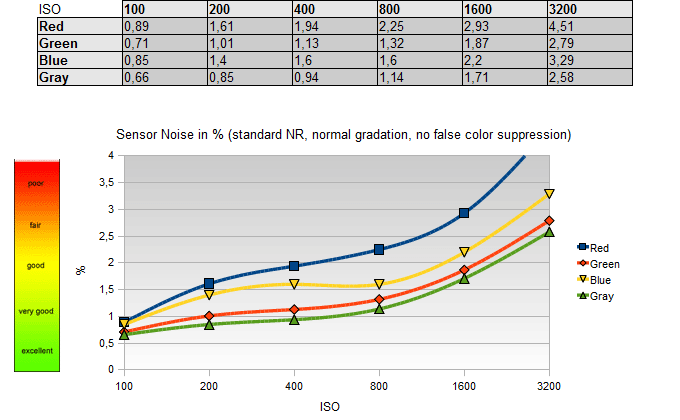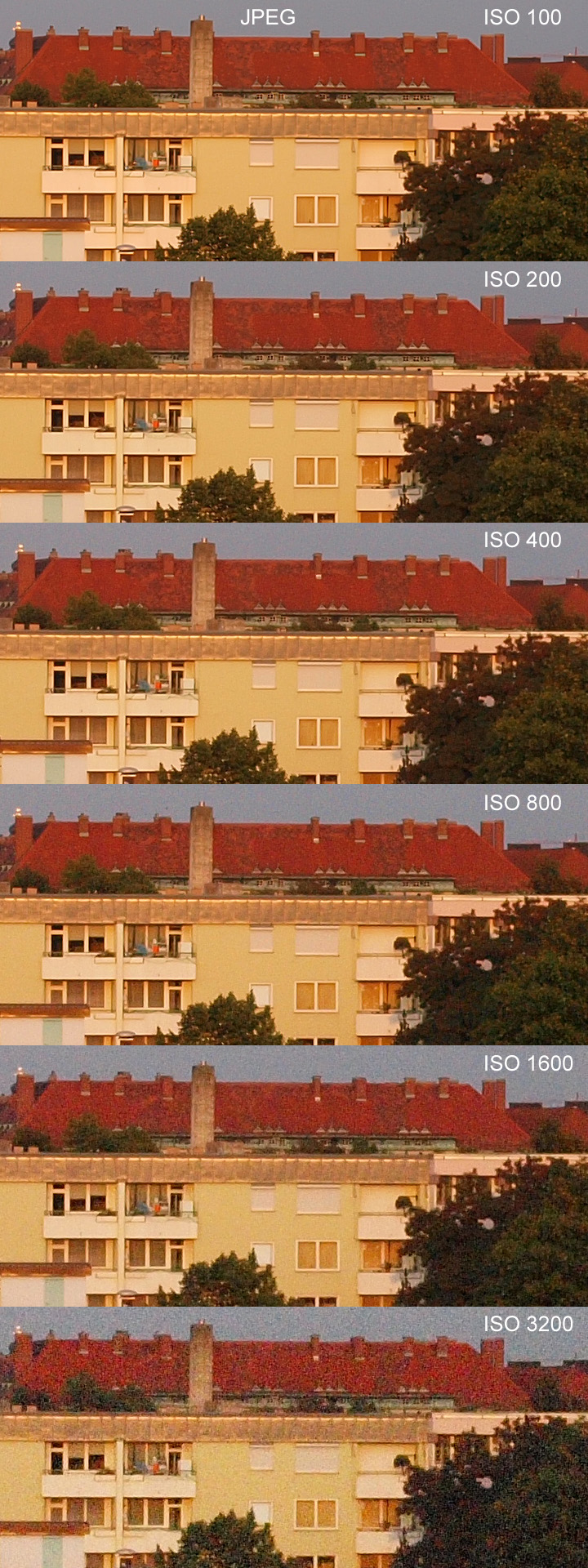|
Olympus E-620 Review / Test Report - Sensor Noise |
|
DSLR Reviews -
DSLRs
|
|
Page 4 of 7

ISO noise
The Panasonic/Olympus LiveMOS sensor has a rather mediocre reputation with respect to sensor noise. However, this isn't really a valid statement. The chart below illustrates its ISO sensor noise characteristic when using Lightroom/ACR for RAW conversions. If you have a look at the corresponding section in the Canon EOS 500D review you will notice that there's barely a difference between the two. ISO 800 is easily usable in this scenario and even ISO 1600 is "Okay". So in principal the sensor is just as good as its APS-C counterparts (sensor noise aspect). However, this applies to Adobe RAW conversions only (and possibly other third-party RAW converters).
 The next chart illustrates the behavior of JPEGs/Olymus Studio conversions (they perform roughly the same here as well) when using "Noise Reduction OFF" in the camera settings. The effect is dismal even at mid ISO settings. ISO 200 is still good here but ISO 400 is not overly impressive already. Well, in the resolution chapter we mentioned that Olympus is using a much higher degree of sharpening compared to Adobe. More sharpening = more sensor noise.
The next chart illustrates the behavior of JPEGs/Olymus Studio conversions (they perform roughly the same here as well) when using "Noise Reduction OFF" in the camera settings. The effect is dismal even at mid ISO settings. ISO 200 is still good here but ISO 400 is not overly impressive already. Well, in the resolution chapter we mentioned that Olympus is using a much higher degree of sharpening compared to Adobe. More sharpening = more sensor noise.
 To be fair - things aren't quite as bad when using the standard noise reduction - the noise characteristic is about as good as Adobe's results. However, expect a comparatively higher loss of detail.
To be fair - things aren't quite as bad when using the standard noise reduction - the noise characteristic is about as good as Adobe's results. However, expect a comparatively higher loss of detail.
 All in all its is very debatable whether the benefits of an aggressive AA filter strategy with a detail recovery via sharpening does really outweight the very negative side effects like lowered resolution and amplified sensor noise.
Here're some real work crops (100%) - you can switch between the straight camera JPEG (Sharpening=NORMAL, Noise Reduction=LOW) and Adobe RAW converted files (default) by moving your mouse cursor over the image. You may notice that the JPEG is much more punchy - that's because the camera was set to VIVID color reproduction (it was a sunset scene so the colors are very warm here).
All in all its is very debatable whether the benefits of an aggressive AA filter strategy with a detail recovery via sharpening does really outweight the very negative side effects like lowered resolution and amplified sensor noise.
Here're some real work crops (100%) - you can switch between the straight camera JPEG (Sharpening=NORMAL, Noise Reduction=LOW) and Adobe RAW converted files (default) by moving your mouse cursor over the image. You may notice that the JPEG is much more punchy - that's because the camera was set to VIVID color reproduction (it was a sunset scene so the colors are very warm here).
 You may notice that the difference between the two is quite marginal.
You may notice that the difference between the two is quite marginal.
Verdict:
 | low ISO noise (ISO 100-200):
 |
 | mid ISO noise (ISO 400-800):
 |
 | high ISO noise (ISO 1600-3200):
 |
|